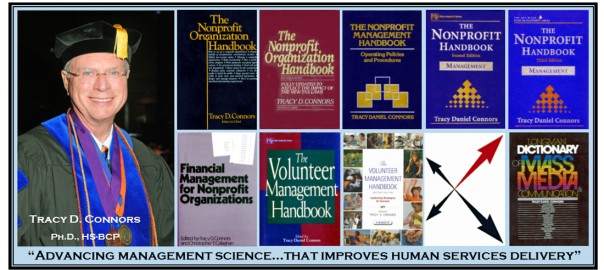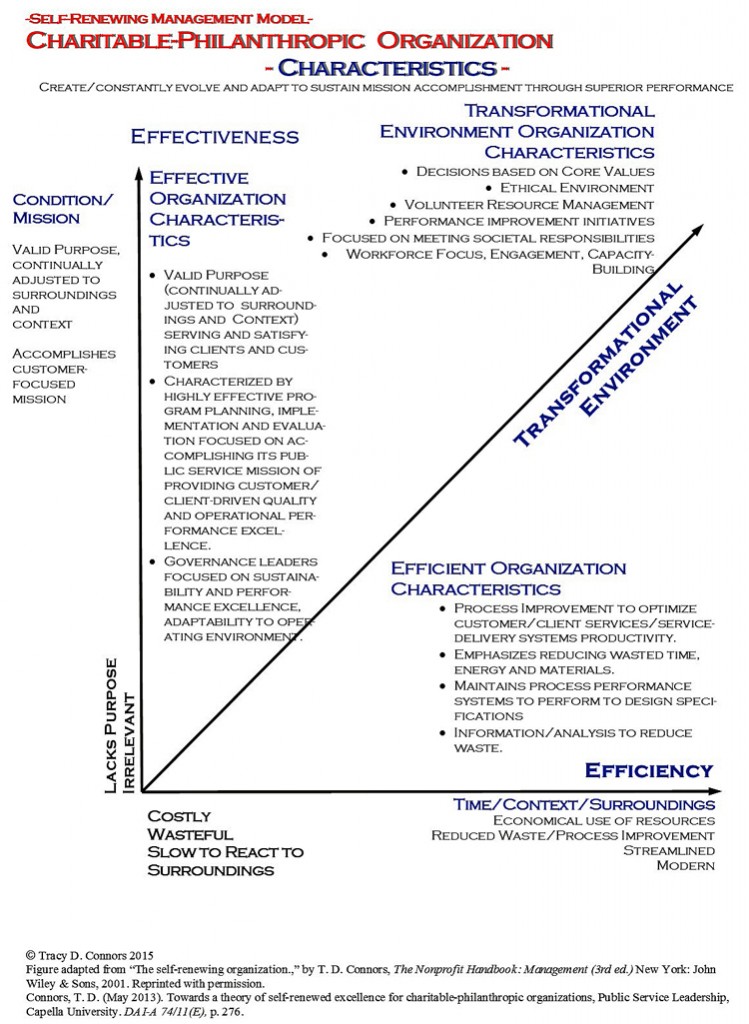Quo Vadis Voluntary Sector:
Nurturing the capacity and developing the change leaders needed to sustain America’s Quality of Life
The growing importance of:
Self-renewing models that align mission and purpose within ever-changing operating environments.
Capacity-building focused on mission readiness and public purpose fulfillment.
Change Leadership reflecting Purpose, Environment and Person (PEP).
Competency-focused workforce professional preparation, development and training.
America’s future quality of life will depend in large part on the ability of its more than one million charitable-philanthropic-nonprofit organizations to collectively provide a myriad of human services ranging from arts and education, to health, advocacy and social services.
Sustaining our national quality of life in the face of expanding needs and dwindling resources will require significant improvements by our voluntary organizations in mission fulfillment, performance, productivity, and human services delivery. These voluntary organizations must deliver a vast range of human services in the face of ever-changing operating environments, compounded by growing demands for the social services needed to sustain our nation’s overall quality of life, and further complicated by growing calls for improved Effectiveness, Efficiency, Transparency and Accountability.
Achieving improvements in overall effectiveness and efficiency resulting in substantially improved performance, results and outcomes will be among the most pressing challenges facing C-P/NP’s as transformational organizations. America’s voluntary sector faces numerous challenges, but when considering the future, they can be seen broadly as including:
New self-renewing models and methods.
Embracing change that aligns them with their operating environments and fulfills their expanding public service missions – is a key to achieving and sustaining Effectiveness, Efficiency and Transformed Organizations.
Capacity-building resulting mission readiness and public purpose fulfillment.
Linking capacity-building to improved mission and public purpose fulfillment.
Change Leadership with PEP.
Broadening the change leadership construct and model from its current focus on the Person, to include consideration of Purpose and Environment (PEP). Change leadership should be based on a variable mix of actions and traits needed by successful leaders such as Personal attributes and behaviors, but also on two other major factors, including: the nature of the Change (dimensions and complexities needed to advance the organization toward mission fulfillment), and the Environment/Situation (the organizational setting, environment and circumstances).
Workforce Professional Preparation, Development and Training.
Greatly expanded management education and training opportunities are needed for the voluntary sector workforce. Moreover, these opportunities should be framed and focused on professional education, training and development that helps practitioners acquire those competencies identified as most useful and contributory to achieving – and sustaining – results and performance improvements reflecting gains in Effectiveness, Efficiency and Transformation – all of which will be required in ever greater measure to meet emerging national Quality of Life needs.


